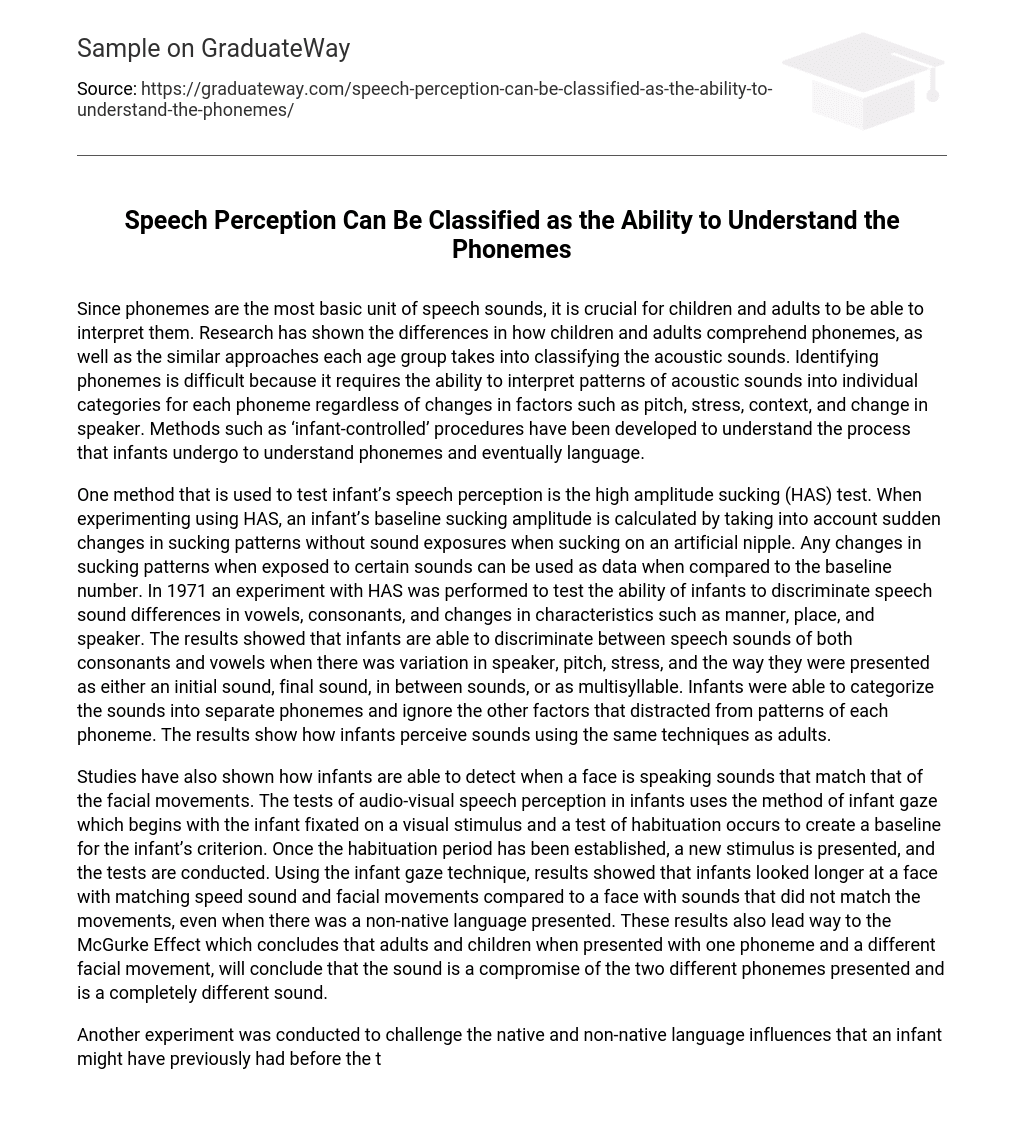Since phonemes are the most basic unit of speech sounds, it is crucial for children and adults to be able to interpret them. Research has shown the differences in how children and adults comprehend phonemes, as well as the similar approaches each age group takes into classifying the acoustic sounds. Identifying phonemes is difficult because it requires the ability to interpret patterns of acoustic sounds into individual categories for each phoneme regardless of changes in factors such as pitch, stress, context, and change in speaker. Methods such as ‘infant-controlled’ procedures have been developed to understand the process that infants undergo to understand phonemes and eventually language.
One method that is used to test infant’s speech perception is the high amplitude sucking (HAS) test. When experimenting using HAS, an infant’s baseline sucking amplitude is calculated by taking into account sudden changes in sucking patterns without sound exposures when sucking on an artificial nipple. Any changes in sucking patterns when exposed to certain sounds can be used as data when compared to the baseline number. In 1971 an experiment with HAS was performed to test the ability of infants to discriminate speech sound differences in vowels, consonants, and changes in characteristics such as manner, place, and speaker. The results showed that infants are able to discriminate between speech sounds of both consonants and vowels when there was variation in speaker, pitch, stress, and the way they were presented as either an initial sound, final sound, in between sounds, or as multisyllable. Infants were able to categorize the sounds into separate phonemes and ignore the other factors that distracted from patterns of each phoneme. The results show how infants perceive sounds using the same techniques as adults.
Studies have also shown how infants are able to detect when a face is speaking sounds that match that of the facial movements. The tests of audio-visual speech perception in infants uses the method of infant gaze which begins with the infant fixated on a visual stimulus and a test of habituation occurs to create a baseline for the infant’s criterion. Once the habituation period has been established, a new stimulus is presented, and the tests are conducted. Using the infant gaze technique, results showed that infants looked longer at a face with matching speed sound and facial movements compared to a face with sounds that did not match the movements, even when there was a non-native language presented. These results also lead way to the McGurke Effect which concludes that adults and children when presented with one phoneme and a different facial movement, will conclude that the sound is a compromise of the two different phonemes presented and is a completely different sound.
Another experiment was conducted to challenge the native and non-native language influences that an infant might have previously had before the tests. It is thought that infants are born with a language-general ability and that by the age of twelve months they have begun to acquire a language-specific ability. The subsequent studies tested the ability of both infants and adults to distinguish sounds that they had no previous exposure to and concluded that the initial presumption of children having a language-specific ability around the age of twelve months is false and that both infants and adults can distinguish sounds of a language that they had no previous exposure to.
Once questions surrounding the ability of infants to perceive non-native speech sounds arose, a model called the perceptual assimilation model (PAM) was created. PAM works under the assumption that infants are able to perceive non-native speech sounds because they compare them in terms of phonemes they know in their native language. The infants compare the phonemes and rate them in terms of how similar they are to phonemes in their native language to distinguish what acoustic sounds are different from others.





